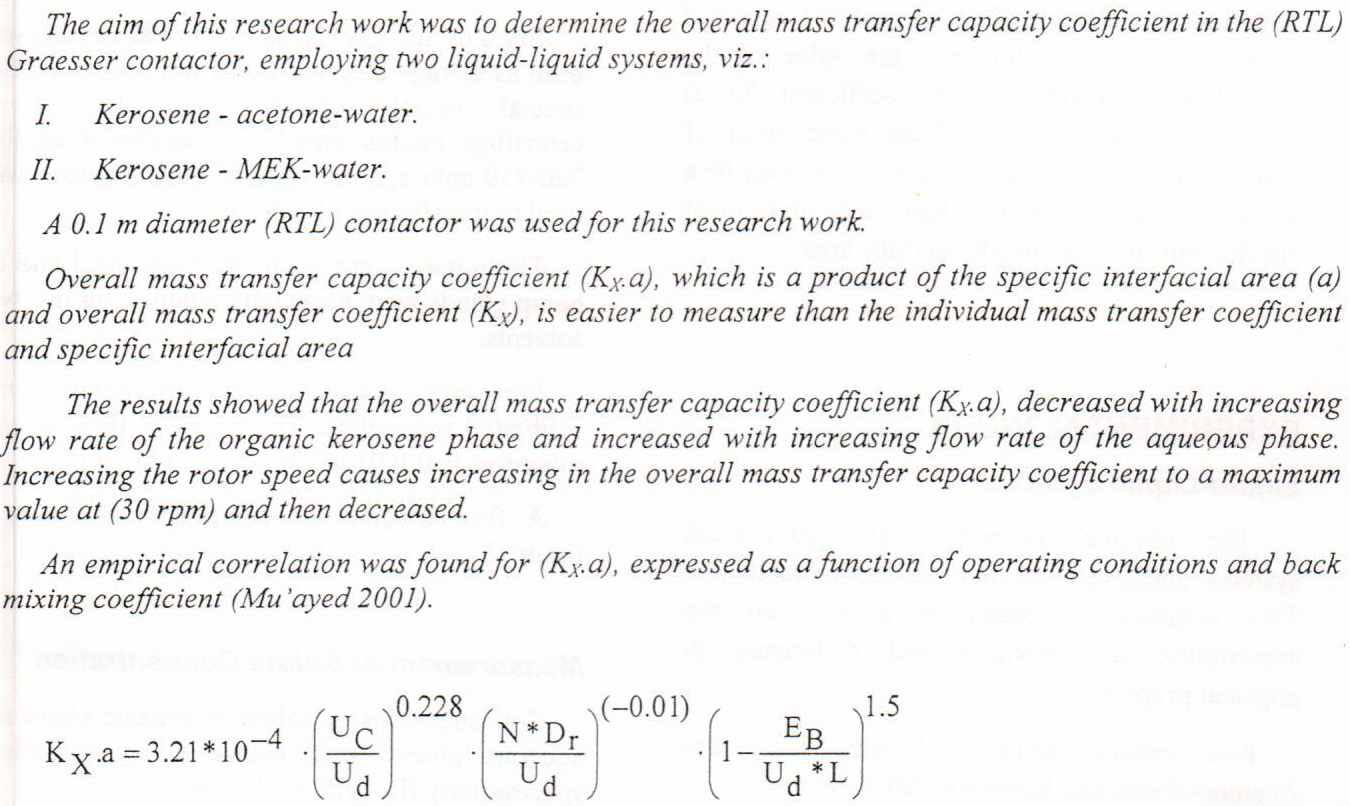
A numerical investigation of mixed convection in a horizontal annulus filled with auniform fluid-saturated porous medium in the presence of internal heat generation is carried out.The inner cylinder is heated while the outer cylinder is cooled. The forced flow is induced by thecold outer cylinder rotating at a constant angular velocity. The flow field is modeled using ageneralized form of the momentum equation that accounts for the presence of porous mediumviscous, Darcian and inertial effects. Discretization of the governing equations is achieved usinga finite difference method. Comparisons with previous works are performed and the results showgood agreement. The effects of pertinent parameters such as the Richardson number and internalRay
... Show MoreThe steady state laminar mixed convection and radiation through inclined rectangular duct with an interior circular tube is investigated numerically for a thermally and hydrodynamicaly fully developed flow. The two heat transfer mechanisms of convection and radiation are treated independently and simultaneously. The governing equations which used are continuity, momentum and energy equations. These equations are normalized and solved using the Vorticity-Stream function and the Body Fitted Coordinates (B.F.C) methods. The finite difference approach with the Line Successive Over-Relaxation (LSOR) method is used to obtain all the computational results. The (B.F.C) method is used to generate the grid of the problem. A computer program (Fortr
... Show MoreThe steady state laminar mixed convection and radiation through inclined rectangular duct with an interior circular tube is investigated numerically for a thermally and hydrodynamicaly fully developed flow. The two heat transfer mechanisms of convection and radiation are treated independently and simultaneously. The governing equations which used are continuity, momentum and energy equations. These equations are normalized and solved using the Vorticity-Stream function and the Body Fitted Coordinates (B.F.C) methods. The finite difference approach with the Line Successive Over-Relaxation (LSOR) method is used to obtain all the computational results. The (B.F.C) method is used to generate the grid of the problem. A computer program (Fortran
... Show MoreIntegration of laminar bubbling flow with heat transfer equations in a novel internal jacket airlift bioreactor using microbubbles technology was examined in the present study. The investigation was accomplished via Multiphysics modelling to calculate the gas holdup, velocity of liquid recirculation, mixing time and volume dead zone for hydrodynamic aspect. The temperature and internal energy were determined for heat transfer aspect.
The results showed that the concentration of microbubbles in the unsparged area is greater than the chance of large bubbles with no dead zones being observed in the proposed design. In addition the pressure, due to the recirculation velocity of liquid around the draft
... Show MoreIn this study, the flow and heat transfer characteristics of Al2O3-water nanofluids for a range of the Reynolds number of 3000, 4500, 6000 and 7500 with a range of volume concentration of 1%, 2%, 3% and 4% are studied numerically. The test rig consists of cold liquid loop, hot liquid loop and the test section which is counter flow double pipe heat exchanger with 1m length. The inner tube is made of smooth copper with diameter of 15mm. The outer tube is made of smooth copper with diameter of 50mm. The hot liquid flows through the outer tube and the cold liquid (or nanofluid) flow through the inner tube. The boundary condition of this study is thermally insulated the outer wall with uniform velocity a
... Show MoreThe present study investigates the effect of the de-sanding (recycling system) on the bearing capacity of the bored piles. Full-scale models were conducted on two groups of piles, the first group was implemented without using this system, and the second group was implemented using the recycling system. All piles were tested by static load test, considering the time factor for which the piles were implemented. The test results indicated a significant and clear difference in the bearing capacity of the piles when using this system. The use of the recycling system led to a significant increase in the bearing capacity of the piles by 50% or more. Thus it was possible to reduce the pile length by (15 % or more) thus, and implementation costs
... Show MoreThe present study investigates the effect of the de-sanding (recycling system) on the bearing capacity of the bored piles. Full-scale models were conducted on two groups of piles, the first group was implemented without using this system, and the second group was implemented using the recycling system. All piles were tested by static load test, considering the time factor for which the piles were implemented. The test results indicated a significant and clear difference in the bearing capacity of the piles when using this system. The use of the recycling system led to a significant increase in the bearing capacity of the piles by 50% or more. Thus it was possible to reduce the pile length by (15 % or more) thus, and implementation c
... Show MoreThe research problem is represented in the weakness of reliance on the role of some motor abilities (flexibility, balance and compatibility) in biomechanical indicators and the performance of a large number of gymnastics skills, including the skill of the human wheel, in addition to the lack of reliance on the use of video imaging of the skill in order to analyze its path and identify its weaknesses. The research aimed to identify the relationship between motor abilities, biomechanical indicators and the degree of performance of the skill of the human wheel, and the descriptive method was used on its own, chosen in an intentional method, consisting of (10) students from the third stage in the Department of Physical Education and Sp
... Show More